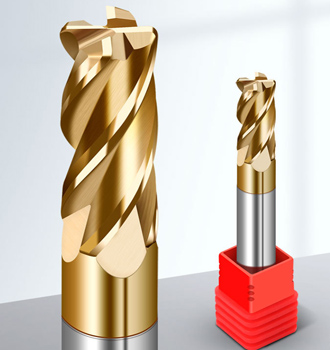Milling equipment is a critical component in any manufacturing or machining process, enabling the precise shaping and sizing of materials through the removal of excess material. To ensure optimal performance, reliability, and longevity of milling equipment, a comprehensive maintenance program is essential. This article outlines the key steps for maintaining milling equipment, covering daily inspections, preventive maintenance tasks, and long-term storage considerations.
Daily Inspections
Machine Exterior and Work Area
Cleanliness: Regularly clean the exterior of the milling machine and the surrounding work area to remove dust, debris, and coolant residue. This helps prevent contamination and ensures smooth operation of moving parts.
Worktable and Vice: Inspect the worktable and vice for any signs of wear, damage, or contamination. Ensure they are securely clamped and aligned to prevent workpiece movement during milling operations.
Coolant System
Coolant Level and Cleanliness: Check the coolant level regularly and ensure it is clean and free of contaminants. Coolant helps dissipate heat, lubricate the cutting edge, and flush away chips. Replace or clean the coolant as needed.
Coolant Delivery System: Inspect the nozzles, pipes, and pumps for leaks, blockages, or wear. Address any issues promptly to prevent damage to the milling machine and workpiece.
Spindle and Tool Holders
Spindle Condition: Visually inspect the spindle for signs of wear, cracks, or damage. Ensure the spindle runs smoothly and is properly lubricated.
Tool Holders: Check the condition of tool holders, including collets, end mills, and drills. Replace worn or damaged tool holders to prevent tool slippage and improve cutting accuracy.
Preventive Maintenance
Lubrication
Moving Parts: Apply appropriate lubricants to moving parts such as slides, guides, and bearings. Follow the manufacturer's recommendations for the type and frequency of lubrication.
Grease Points: Inspect and refill grease points regularly to ensure continuous lubrication of bearings and other critical components.
Electrical System
Motor and Wiring: Check the motor and wiring for signs of wear, overheating, or damage. Ensure all connections are tight and free of corrosion.
Sensors and Controls: Verify the functionality of sensors and controls, ensuring they provide accurate feedback and respond correctly to operator inputs.
Mechanical Components
Adjustments and Alignments: Periodically check and adjust the alignment of the spindle, worktable, and feed mechanisms. Misalignment can lead to vibration, poor surface finish, and accelerated wear.
Drive Belts and Pulleys: Inspect drive belts and pulleys for wear, tension, and alignment. Replace worn belts and adjust pulleys as necessary to ensure smooth power transmission.
Long-Term Storage Considerations
When milling equipment will be stored for an extended period, additional steps are required to protect it from deterioration.
Thorough Cleaning: Perform a deep clean of the entire machine, removing all traces of coolant, oil, and debris.
Rust Prevention: Apply a rust-inhibiting preservative to exposed metal surfaces to prevent corrosion.
Lubrication: Coat moving parts with a light layer of lubricating oil to prevent sticking and rust.
Disconnect Power: Unplug the machine from the power source to prevent accidental startup and reduce the risk of electrical damage.
Cover the Machine: Use a breathable cover to protect the machine from dust, dirt, and moisture.
Operator Training and Documentation
Training Programs: Provide comprehensive training for operators, emphasizing safe operation practices, routine maintenance tasks, and troubleshooting procedures.
Maintenance Records: Keep detailed records of all maintenance activities, including dates, tasks performed, parts replaced, and any issues or concerns noted. These records are invaluable for tracking equipment performance, identifying trends, and planning future maintenance.
Conclusion
Proper maintenance of milling equipment is crucial for achieving high-quality results, reducing downtime, and extending the lifespan of the equipment. By following a structured maintenance program that includes daily inspections, preventive maintenance tasks, and long-term storage considerations, manufacturers can ensure their milling equipment remains in top condition, ready to meet the demands of their production processes. Regular training for operators and maintenance personnel, coupled with meticulous record-keeping, further enhances the effectiveness of the maintenance program, ensuring optimal performance and reliability of the milling equipment.


















